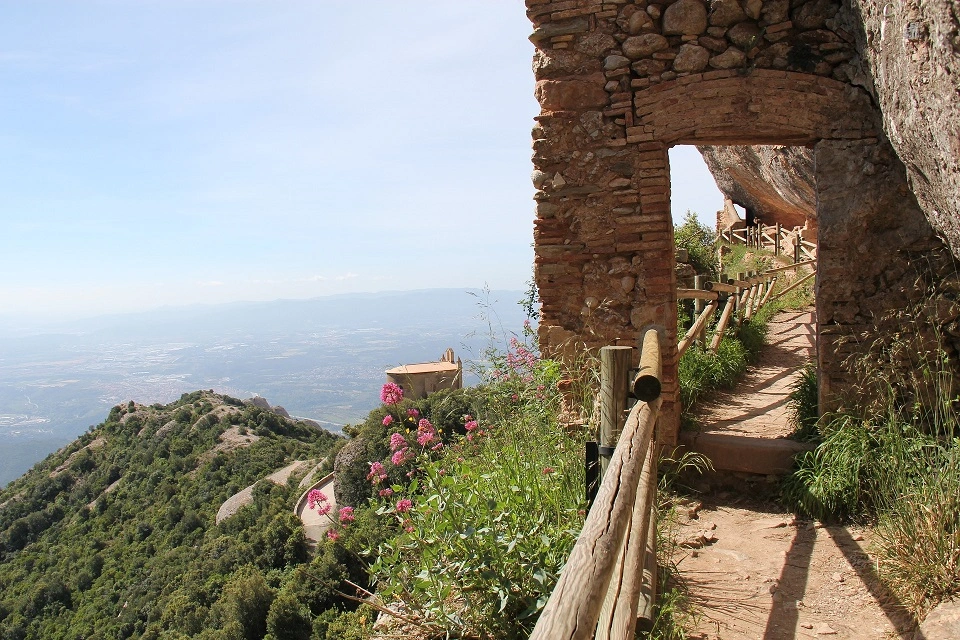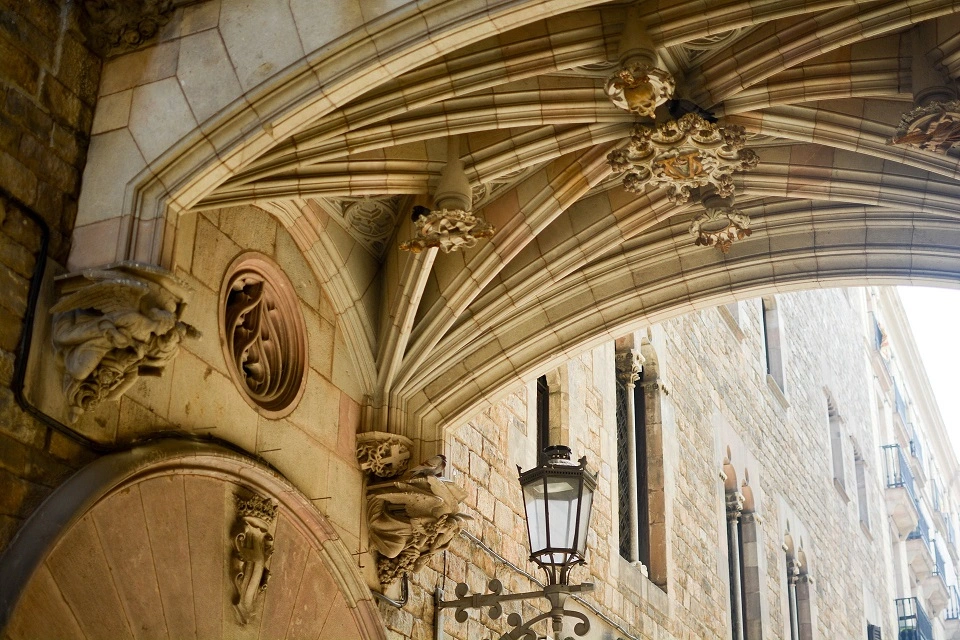Park Güell in Barcelona, Spain is one of the most enchanting places in the city. Designed by the legendary architect Antoni Gaudí, it showcases his unique style and vision.
Located on Carmel Hill, the park offers sweeping views of the city and Mediterranean Sea. It is a place where architecture and nature blend beautifully.
The park is not just a typical green space. It is a masterpiece of artistic expression. With its vibrant colors, curved lines, and imaginative shapes, it captivates visitors of all ages. Every corner of the park feels like walking through a dream. For those visiting Barcelona, Park Güell is an essential stop.
The Origins of Park Güell in Barcelona, Spain
Park Güell in Barcelona, Spain began as a housing project. Count Eusebi Güell, a wealthy industrialist, commissioned Antoni Gaudí to design it. The idea was to create a residential garden city inspired by British models. The plan included homes, public spaces, and access to fresh air and nature.
Construction began in 1900. However, the project did not attract buyers. Only two houses were built before the project was halted. Eventually, the land was sold to the city and turned into a public park. Today, it stands as a testament to Gaudí’s creative genius.
Antoni Gaudí’s Unique Vision
Gaudí’s influence is visible in every element of Park Güell in Barcelona, Spain. His architectural style was inspired by nature, religion, and Catalan culture. He avoided straight lines, believing they did not appear in nature. Instead, he used organic shapes, flowing curves, and bright colors.
The park feels like a living organism. The pathways wind like roots through the land. Columns and walls blend into the surrounding terrain. It’s an environment where man-made structures and nature coexist harmoniously. This vision makes Park Güell a magical experience for visitors.
Entering the Monumental Zone
The heart of Park Güell in Barcelona, Spain is the Monumental Zone. This is the most famous and photographed part of the park. Entrance to this section requires a ticket, but it is worth every cent. Here, visitors can explore some of Gaudí’s most iconic designs.
The entrance features two colorful buildings with fairy-tale charm. One of them houses a souvenir shop. The other was the former guard’s house. Their roofs are covered in mosaics and shaped like mushrooms. These structures immediately draw tourists into Gaudí’s imaginative world.
The Dragon Stairway
Just past the entrance lies the Dragon Stairway. This staircase is one of the park’s highlights. It is adorned with a mosaic-covered dragon, also known as “El Drac.” This figure has become a symbol of Park Güell in Barcelona, Spain. Visitors line up to take photos with this famous creature.
The stairway leads up to the Hypostyle Hall. The steps are bordered by curving walls and colorful tilework. Every detail is crafted with care and artistic flair. The use of broken ceramic pieces, known as “trencadís,” gives the staircase a vibrant and dynamic feel.
The Hypostyle Hall
At the top of the Dragon Stairway sits the Hypostyle Hall. This structure was intended to serve as a marketplace for the residential area. It consists of 86 large columns that support the terrace above. The hall’s ceiling is adorned with intricate mosaics and round medallions.
The acoustics inside the hall are impressive. Sometimes musicians play here, filling the space with haunting melodies. The columns are slightly slanted to improve stability and mimic the trunks of trees. This attention to detail showcases Gaudí’s commitment to natural design.
The Nature Square
Above the Hypostyle Hall is the large open space known as the Nature Square. This plaza was originally called the Greek Theatre. It was designed to host community events and performances. The space is surrounded by a serpentine bench that follows the terrace’s edge.
The bench is one of the most famous elements in Park Güell in Barcelona, Spain. It is covered in colorful mosaics made from recycled tiles. Visitors sit, rest, and admire the view of the city below. From here, you can see the Sagrada Família and even the sea on clear days.
The Viaducts and Walkways
Park Güell in Barcelona, Spain is crisscrossed with winding paths and viaducts. These elevated roadways were designed for carriages but now serve pedestrians. Gaudí integrated them into the landscape, building with stone from the site itself.
The walkways curve around hills and pass under archways made of rough stone. Columns resemble tree trunks, blending architecture with nature. These paths provide shade and shelter as visitors explore the park. They also offer many hidden spots perfect for photos or quiet reflection.
The Austria Gardens
The Austria Gardens are part of the residential section of the original project. This area is now filled with trees and flowers native to Austria. The park received a donation of plants from the country, which gave the gardens their name.
In this peaceful corner, you’ll find the two houses built before the project ended. One of them, the Casa del Guarda, served as the gatekeeper’s house. The other, once owned by Gaudí himself, is now the Gaudí House Museum. It offers a deeper look into the architect’s personal life and work.
Gaudí House Museum
The Gaudí House Museum is located within Park Güell in Barcelona, Spain. Gaudí lived here for nearly 20 years until his death in 1926. The house showcases furniture and objects designed by Gaudí. It provides insight into his daily life and creative process.
Visitors can see the bedroom, study, and original furnishings. The museum also includes models, drawings, and photographs from Gaudí’s other works. It is a must-see for anyone interested in architecture or design. The experience adds depth to the visit and enhances understanding of Gaudí’s genius.
Nature and Wildlife in Park Güell
Though famous for its architecture, Park Güell in Barcelona, Spain is also rich in nature. The park is home to many plant species, including pines, palms, and flowering shrubs. It’s a place where you can enjoy both art and the outdoors.
Birdwatchers will delight in spotting various species. The natural environment attracts birds such as swallows, pigeons, and warblers. Butterflies flutter through the air, adding color to the landscape. Benches and quiet areas make it easy to relax and take it all in.
The Best Times to Visit Park Güell in Barcelona, Spain
The best times to visit Park Güell are early in the morning or late in the afternoon. During these hours, the park is less crowded. The lighting is also perfect for photography. Shadows cast by the unique architecture add to the magical atmosphere.
Spring and fall offer the most pleasant weather. Summer can be hot, and shade is limited in some areas. Tickets for the Monumental Zone should be booked in advance, especially during peak seasons. Planning ahead ensures a more relaxed and enjoyable visit.
Practical Information for Tourists
Park Güell in Barcelona, Spain is easily accessible by public transport. Buses and metro lines stop nearby, but be prepared for a short uphill walk. The park has restrooms, a café, and gift shops near the entrance.
Most of the park is free to explore. However, access to the Monumental Zone requires a ticket. Discounts are available for students, seniors, and children. Guided tours are also offered in multiple languages. These tours provide deeper insight into the park’s history and Gaudí’s work.
Accessibility at Park Güell
Efforts have been made to improve accessibility in Park Güell in Barcelona, Spain. Some paths and areas are wheelchair-friendly. Elevators and ramps provide access to parts of the Monumental Zone. However, the hilly terrain and uneven paths may be challenging for some.
Visitors with limited mobility should plan their route in advance. Maps and staff can help identify the best paths. Comfortable shoes and water are recommended for all visitors, especially in warm weather.
The Cultural Significance of Park Güell
Park Güell in Barcelona, Spain is more than just a tourist attraction. It is a cultural and historical treasure. In 1984, it was declared a UNESCO World Heritage Site. This recognition highlights its value to humanity and its role in architectural history.
The park is a symbol of Catalan Modernism. It reflects the artistic and social movements of the early 20th century. Gaudí’s work here is a source of pride for Barcelona and for Spain. It continues to inspire artists, architects, and visitors from around the world.
Photography in Park Güell
Park Güell in Barcelona, Spain is a paradise for photographers. Every angle offers a new and beautiful composition. The contrast of natural scenery and architectural forms creates stunning images. Bright mosaics catch the light, adding color and life to every shot.
Early morning light enhances the textures and colors of the park. Sunset also provides golden hues and dramatic shadows. Professional photographers often use the park as a backdrop. But even amateur photographers can capture amazing memories here.
Shopping and Dining Nearby
After visiting Park Güell in Barcelona, Spain, many tourists explore the surrounding neighborhood. Small shops sell local crafts, souvenirs, and Gaudí-inspired items. Art prints, ceramic tiles, and handmade jewelry are popular purchases.
Local cafés and restaurants serve delicious Catalan cuisine. Tapas, seafood, and regional wines can be enjoyed nearby. These spots offer a great way to relax after walking through the park. They also give a taste of Barcelona’s vibrant culture.
Leaving with Inspiration
A visit to Park Güell in Barcelona, Spain leaves a lasting impression. Gaudí’s creativity and vision continue to amaze people from all walks of life. The harmony between nature and design is uplifting and thought-provoking. Visitors often leave feeling inspired by the beauty and imagination found throughout the park. It is more than just a destination—it is an unforgettable experience that captures the spirit of Barcelona.

